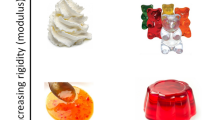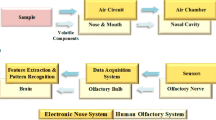Abstract
Grape is the most consumed nectar in Brazil and a relatively expensive beverage. Therefore, it is susceptible to fraud by substitution with other less expensive fruit juices. Adulterations of grape nectars by the addition of apple juice, cashew juice, and mixtures of both were evaluated by using low-field nuclear magnetic resonance (LF-NMR) and supervised multivariate classification methods. Two different approaches were investigated using one-class (only unadulterated samples (UN) were modeled) and multiclass (three classes were modeled: UN, adulterated with cashew (CAS), and adulterated with apple (APP)) strategies. For the one-class approach, soft independent modeling of class analogy (SIMCA), one-class partial least squares (OCPLS), and data-driven SIMCA (DD-SIMCA) models were built. For the multiclass approach, partial least squares discriminant analysis (PLS-DA) and multiclass SIMCA models were built. The results obtained demonstrated good performances by all the one-class methods with efficiency rates higher than 93%. For the multiclass approach, the classification of samples containing only one type of adulterant presented efficiencies higher than 90% and 97% using SIMCA and PLS-DA, respectively. The classification of samples containing blends of two adulterants was satisfactory for the CAS class, but not for the APP class when applying PLS-DA. Nevertheless, multiclass SIMCA did not provide satisfactory predictions for either of these two classes.






Similar content being viewed by others
References
Ammari F, Redjdal L, Rutledge DN (2015) Detection of orange juice frauds using front-face fluorescence spectroscopy and independent components analysis. Food Chem 168:211–217
Barker M, Rayens W (2003) Partial least squares for discrimination. J Chemometr 17:166–173
Bevilacqua M, Bucci R, Magrì AD, Magrì AL, Nescatelli R, Marini F (2013) Classification and class-modelling. In: Marini F (ed) Data handling in science and technology, 1st edn. Elsevier, Amsterdam, pp 171–233
Boggia R, Casolino MC, Hysenaj V, Oliveri P, Zunin P (2013) A screening method based on UV–visible spectroscopy and multivariate analysis to assess addition of filler juices and water to pomegranate juices. Food Chem 140:735–741
Botelho BG, Reis N, Oliveira LS, Sena MM (2015) Development and analytical validation of a screening method for simultaneous detection of five adulterants in raw milk using mid-infrared spectroscopy and PLS-DA. Food Chem 181:31–37
Brazil (2009) Decreto no. 6.871, de 04 de junho de 2009. Diário Oficial da União
Brereton RG, Lloyd GR (2014) Partial least squares discriminant analysis: taking the magic away. J Chemometr 28:213–225
Callao MP, Ruisánchez I (2018) An overview of multivariate qualitative methods for food fraud detection. Food Control 86:283–293
Colnago LA, Andrade FD, Souza AA, Azeredo RB, Lima AA, Cerioni LM, Pusiol DJ (2014) Why is inline NMR rarely used as industrial sensor? Challenges and opportunities. Chem. Eng. Technol. 37:191–203
Davenel A, Pouvreau S, Cambert M, Suquet M, Mariette F (2009) NMR relaxometry as a potential non-invasive routine sensor for characterization of phenotype in Crassostrea gigas. Aquaculture 291:74–77
Esslinger S, Riedl J, Fauhl-Hassek C (2013) Potential and limitations of non-targeted fingerprinting for authentication of food in official control. Food Res Int 60:189–204
Flores DWM, Colnago LA, Ferreira MD, Spoto MHF (2016) Prediction of orange juice sensorial attributes from intact fruits by TD-NMR. Microchem J 128:113–117
Gondim CS, Junqueira RG, Souza SVC, Ruisánchez I, Callao MP (2017) Detection of several common adulterants in raw milk by MID-infrared spectroscopy and one-class and multi-class multivariate strategies. Food Chem 230:68–75
Han J, Wu Y, HuangW WB, Sun C, Ge Y, Chen Y (2012) PCR and DHPLC methods used to detect juice ingredient from 7 fruits. Food Control 25:696–703
Jandrić Z, Roberts D, Rathor MN, Abrahim A, Islam M, Cannavan A (2014) Assessment of fruit juice authenticity using UPLC–QToF MS: a metabolomics approach. Food Chem 148:7–17
Kennard RW, Stone LA (1969) Computer aided design of experiments. Technometrics 11:137–148
Kirtil E, Cikrikci S, McCarthy MJ, Oztop MH (2017) Recent advances in time domain NMR & MRI sensors and their food applications. Curr Opin Food Sci 17:9–15
López MI, Callao MP, Ruisánchez I (2015) A tutorial on the validation of qualitative methods: from the univariate to the multivariate approach. Anal Chim Acta 891:62–72
López MI, Trullols E, Callao MP, Ruisánchez I (2014) Multivariate screening in food adulteration: untargeted versus targeted modelling. Food Chem 147:177–181
Marini F (2010) Classification methods in chemometrics. Curr Anal Chem 6:72–79
Miaw CSW, Assis C, Silva ARCS, Cunha ML, Sena MM, Souza SVC (2018) Determination of main fruits in adulterated nectars by ATR-FTIR spectroscopy combined with multivariate calibration and variable selection methods. Food Chem 254:272–280
Miaw CSW, Sena MM, Souza SVC, Callao MP, Ruisánchez I (2018a) Detection of adulterants in grape nectars by attenuated total reflectance Fourier-transform mid-infrared spectroscopy and multivariate classification strategies. Food Chem 266:254–261
Miaw CSW, Sena MM, Souza SVC, Callao MP, Ruisánchez I (2018b) Variable selection for multivariate classification aiming to detect individual adulterants and their blends in grape nectars. Talanta 190:55–61
Oliveri P, Malegori C, Casale M (2018) Multivariate classification techniques. In: Encyclopedia of Analytical Science, Reference Module in Chemistry, Molecular Sciences and Chemical Engineering, 3rd edn. Elsevier, Amsterdam
Oliveri P, Malegori C, Casale M, Tartacca E, Salvatori G (2019) An innovative multivariate strategy for HSI-NIR images to automatically detect defects in green coffee. Talanta. 199:270–276
Pardo MA (2015) Evaluation of a dual-probe real time PCR system for detection of mandarin in commercial orange juice. Food Chem 172:377–384
Pereira FMV, Carvalho AS, Cabeça LF, Colnago LA (2013) Classification of intact fresh plums according to sweetness using time-domain nuclear magnetic resonance and chemometrics. Microchem J 108:14–17
Pereira FMV, Colnago LA (2012) Determination of the moisture content in beef without weighing using benchtop time-domain nuclear magnetic resonance spectrometer and chemometrics. Food Anal Method 5:1349–1353
Queiroz EC, Menezes HC (2005) Suco de laranja. In: Venturini Filho WG (ed) Tecnologia de bebidas: matéria-prima, BPF/APPCC, legislação e mercado, 2nd edn. Edgard Blücher, São Paulo, pp 221–254
Rinke P (2016) Tradition meets high tech for authenticity testing of fruit juices. In: Downey G (ed) Advances in food authenticity testing, 1st edn. Elsevier, Amsterdam, pp 625–665
Rius AP, Callao MP, Rius FX (1997) Multivariate statistical process control applied to sulfate determination by sequential injection analysis. Analyst 122:737–741
Rodionova OY, Oliveri P, Pomerantsev AL (2016) Rigorous and compliant approaches to one-class classification. Chemometr Intell Lab Syst 159:89–96
Santos PM, Colnago LA (2018) Comparison among MIR, NIR, and LF-NMR techniques for quality control of jam using chemometrics. Food Anal Method 11:2029–2034
Santos PM, Pereira-Filho ER, Colnago LA (2016) Detection and quantification of milk adulteration using time domain nuclear magnetic resonance (TD-NMR). Microchem J 124:15–19
Shao X, Li Y (2012) Classification and prediction by LF NMR. Food Bioprocess Tech 5:1817–1823
Shao X, Li Y (2013) Application of low-field NMR to analyze water characteristics and predict unfrozen water in blanched sweet corn. Food Bioprocess Tech 6:1593–1599
Soria A, Ruiz-Matute A, Sanz M, Martínez-Castro I (2008) Chromatographic technique: gas chromatography (GC). In: Sun DW (ed) Modern techniques for food authentication, 2nd edn. Elsevier, Amsterdam, pp 321–360
Spinelli FR, Dutra SV, Carnieli G, Leonardelli S, Drehmer AP, Vanderlinde R (2016) Detection of addition of apple juice in purple grape juice. Food Control 69:1–4
Spraul M, Schütz B, Rinke P, Koswig S, Humpfer E, Schäfer H, Mörtter M, Fang F, Marx U, Minoja A (2009) NMR-based multi parametric quality control of fruit juices: SGF profiling. Nutrients 1:148–155
Todt H, Guthausen G, Burk W, Shcmalbein D, Kamlowski A (2006) Water/moisture and fat analysis by time-domain NMR. Food Chem 96:436–440
Xu L, Goodarzi M, Shi W, Cai CB, Jiang JH (2014) A MATLAB toolbox for class modeling using one-class partial least squares (OCPLS) classifiers. Chemometr Intell Lab Syst 139:58–63
Zontov Y, Rodionova OY, Kucheryavskiy SV, Pomerantsev A (2017) DD-SIMCA–A MATLAB GUI tool for data driven SIMCA approach. Chemometr Intell Lab Syst 167:23–28
Acknowledgments
The authors acknowledge Giuliano Elias Pereira from EMBRAPA Grape & Wine/Semiarid (Petrolina, Brazil) for providing the Isabel grapes.
Funding
This work was supported by Coordenação de Aperfeiçoamento de Pessoal de Nível Superior (CAPES) (PhD scholarship, finance code 001).
Author information
Authors and Affiliations
Corresponding author
Ethics declarations
Conflict of Interest
Carolina Sheng Whei Miaw declares that she has no conflict of interest. Poliana Macedo Santos declares that she has no conflict of interest. Alessandro Rangel Carolino Sales Silva declares that he has no conflict of interest. Aline Gozzi declares that she has no conflict of interest. Nilson César Castanheira Guimarães declares that he has no conflict of interest. Maria Pilar Callao declares that she has no conflict of interest. Itziar Ruisánchez declares that she has no conflict of interest. Marcelo Martins Sena declares that he has no conflict of interest. Scheilla Vitorino Carvalho de Souza declares that she has no conflict of interest.
Ethical Approval
This article does not contain any studies with human participants or animals performed by any of the authors.
Informed Consent
Not applicable.
Additional information
Publisher’s Note
Springer Nature remains neutral with regard to jurisdictional claims in published maps and institutional affiliations.
Rights and permissions
About this article
Cite this article
Miaw, C.S.W., Santos, P.M., Silva, A.R.C.S. et al. Comparison of Different Multivariate Classification Methods for the Detection of Adulterations in Grape Nectars by Using Low-Field Nuclear Magnetic Resonance. Food Anal. Methods 13, 108–118 (2020). https://doi.org/10.1007/s12161-019-01522-7
Received:
Accepted:
Published:
Issue Date:
DOI: https://doi.org/10.1007/s12161-019-01522-7




